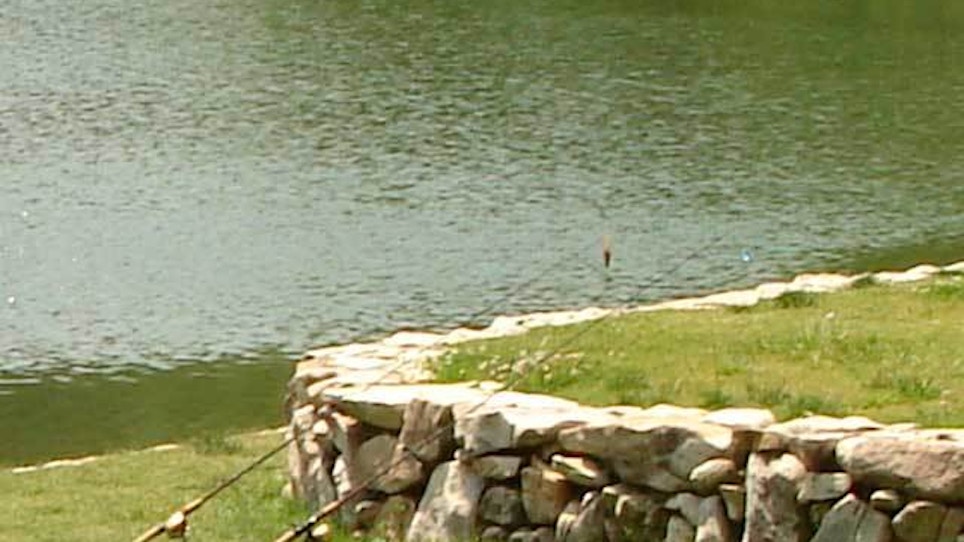By ANN WESSEL | St. Cloud Times
PINE RIVER, Minn. (AP) — For the fish squeezers, the walleye season starts about two weeks before the fishing opener.
On the Whitefish chain of lakes, it starts when the water warms to about 45 degrees and the walleyes swim upstream to spawn on a stretch of rocky river bottom. Except they don't make it past the mouth of the Pine River, where grates funnel them into a trap net.
Here, a successful day on the water is measured in quarts, the St. Cloud Times reported.
The Pine River egg take station, one of eight throughout Minnesota at the heart of the Department of Natural Resources' annual $3.5 million walleye stocking effort, produced 765 quarts April 23-May 5. This season's take translates to about 94.7 million eggs. Factoring in the expected survival rate, it should produce 63.7 million fry.
Some of the walleye eggs Brainerd Area Fisheries staff harvests here will hatch in St. Paul, and could make their way into Stearns County lakes as part of Montrose Area Fisheries' stocking plan.
Only 10-15 percent of walleye caught in Minnesota are the result of stocking, according to Neil Vanderbosch, a St. Paul-based fisheries program consultant for the DNR. Walleye populations are self-sustaining in 263 Minnesota lakes.
The DNR stocks about 1,050 of the state's 11,842 lakes. Lakes are generally stocked every other year.
In an average year, 350 million to 450 million walleye fry are stocked in Minnesota. Two-thirds are stocked directly into lakes; the rest go to the rearing ponds that produce fingerlings. Vanderbosch said that's about half the number stocked in the '40s and '50s, when little evaluation was done. Another change: Today, most walleye stocked consist of fry — mosquito-sized fish produced at a cost of $4 per 1,000. Fingerlings, fish in the 4- to 6-inch range, cost about $1 per fish.
Little has changed at the Pine River site since the station opened in the early 1920s.
Every morning, staff lift the 12-foot-square, 4-foot-deep trap net to crowd the fish toward the platform where the eggs are fertilized.
With long-handled nets on this Friday in late April, Andy Wiebusch and David Lockwood scooped out the fish one or two at a time. The suckers went back into the water immediately.
Each walleye got a squeeze. Ripe females, those ready to spawn, went into the galvanized tank on the left. Green females, those not yet ready to release eggs, went back into a crib. Males went into the tank on the right.
Because not as many males appeared in the traps the first few days, some were held back. Water pumped through each tank.
At the egg stripping station, Mike Knapp took hold of the females in the crook of his arm, and applied pressure from below the gills to above the dorsal fin, releasing the eggs.
“You're fighting the fish and you're trying to squeeze it at the same time,” Knapp said.
Some of the larger females can produce 1 quart of eggs. Each quart contains up to 125,000 eggs. This year, Mills said, each female produced about 123,830 eggs.
Owen Baird took hold of the males. Four males fertilize each batch of eggs from two females.
Fish returned to the water via a chute under the station.
A couple of ladles of water are added to the contents of the numbered plastic salad bowl, which are then stirred for 30 seconds with a white plastic spatula.
A ladle of Bentonite clay, slurry at this point, helps keep the eggs from clumping together. In the river, the eggs would adhere to the rocky river bottom. But back at the hatchery, eggs that clump together die.
The grayish mix sits for a few minutes before it is walked down the dock to a wooden platform.
Carl Mills, who manages the hatchery, descends the ladder into the water, and one by one, empties the bowls into a screened cradle. He gently rocks the mixture in the river to wash away the clay before dumping the eggs into a water-filled cooler where lines drawn in black marker delineate the 20-, 30- and 40-quart levels.
In about three hours, after the eggs have hardened up a bit, staff will load the cooler into the back of a pickup truck. Back at the Brainerd hatchery, the eggs will get an iodine wash. They'll go to St. Paul within a couple of days.
After the morning's take at the Pine River, Wiebusch cleared debris from the grates with a garden rake.
Overnight guards have freed logs and chased away pelicans, snapping turtles, muskrats, net-chewing beavers and people. Occasionally someone will get the idea to try to take fish from the site.
By the end of this morning, the fish count was 59 males and 82 females. Of the females, 37 in the trap and 17 more from the crib were ripe, 27 were green (and put into the crib) and one was spent.
In the Montrose region, Stewig expected to be stocking between May 16 and May 30.
In the fall, DNR electrofishing — a means of counting fish without killing them— will reveal the survival rate.
If all goes well, those walleye stocked this year should be keeper-size in three or four years.
———
Information from: St. Cloud Times, www.sctimes.com






